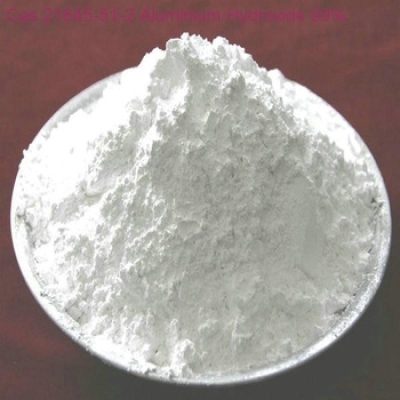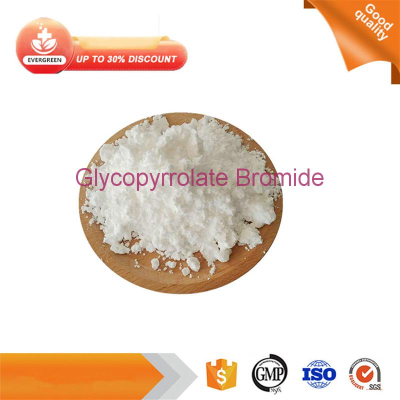-
Categories
-
Pharmaceutical Intermediates
-
Active Pharmaceutical Ingredients
-
Food Additives
- Industrial Coatings
- Agrochemicals
- Dyes and Pigments
- Surfactant
- Flavors and Fragrances
- Chemical Reagents
- Catalyst and Auxiliary
- Natural Products
- Inorganic Chemistry
-
Organic Chemistry
-
Biochemical Engineering
- Analytical Chemistry
- Cosmetic Ingredient
-
Pharmaceutical Intermediates
Promotion
ECHEMI Mall
Wholesale
Weekly Price
Exhibition
News
-
Trade Service
Introduction Cirrhotic cardiomyopathy (CCM) is related to portal hypertension and liver cirrhosis.
It is characterized by internal subclinical changes in myocardial structure and function without obvious structural abnormalities caused by other reasons (such as ischemia).
This article mainly summarizes the clinical manifestations, diagnostic criteria and treatment methods of CCM.
It is worth noting that the diagnostic criteria for CCM have been revised in 2020.
CCM may increase the risk of major cardiac events after transjugular intrahepatic portosystemic bypass (TIPS) and after liver transplantation, so it is necessary to follow up with echocardiography in patients with cirrhotic cardiomyopathy.
Clinical manifestations of CCM Because the heart function of CCM is close to normal in the resting state, its diagnosis is very difficult.
Normally, this syndrome is not recognized until clinical decompensation occurs, at which time patients usually present with high output heart failure or diastolic heart failure.
The development of heart failure is divided into 4 stages.
Stage A: There are risk factors (such as high blood pressure, diabetes), and patients with liver cirrhosis or metabolic syndrome do not have organic heart disease; Stage B: There are structural changes without clinical manifestations (such as heart remodeling), imaging examination shows left Ventricular remodeling and/or systolic or diastolic dysfunction without symptoms of heart failure; stage C: clinical manifestations (left ventricular remodeling and/or systolic or diastolic dysfunction + previous or current symptoms of heart failure); stage D: appearing Refractory clinical manifestations (refractory heart failure requiring special intervention).
CCM diagnostic criteria 2005 diagnostic criteria: The 2005 World Congress of Gastroenterology defined the systolic dysfunction of CCM as a reduction in left ventricular ejection fraction (LVEF) of <55%, or in a drug or physiologically induced stress state Inferior systolic response is poor; CCM diastolic dysfunction is defined as the mitral valve blood flow velocity (E/A) <1, isovolumic diastolic time>200 milliseconds, or deceleration time>80 milliseconds from early to late diastole.
2020 diagnostic criteria: CCM systolic dysfunction is defined as a decrease in LVEF (≤50%) or a decrease in overall longitudinal strain (GLS) (absolute value <18).
Diastolic dysfunction is defined as having at least the following 3 conditions: blood flow from mitral valve in early diastole to mitral annulus blood flow velocity (E/e')≥15, left atrial volume index (LAVI)>34 mL/m2 , The interval e'<7 cm/s, or the maximum flow velocity of tricuspid regurgitation in the absence of pulmonary hypertension>2.
8 m/s.
Treatment and management of CCM CCM usually manifests as subclinical changes in cardiac structure and function in patients with end-stage liver disease (ESLD).
This change may become more pronounced as the burden on the heart increases after TIPS or liver transplantation.
TIPS implantation leads to an increase in preload, which may cause significant heart failure (ie, cardiac decompensation) in CCM patients.
Therefore, if CCM patients are treated with TIPS, it may be beneficial to perform echocardiographic monitoring in the first few months, which helps to ensure that heart function does not experience subclinical deterioration.
When more and more patients develop complete or partial metabolic syndrome, the risk of heart failure after liver transplantation can be further increased.
At this time, effective control of high blood pressure, diabetes, dyslipidemia and obesity is essential to reduce the risk of heart failure and other cardiovascular diseases.
When transplant recipients with CCM are waiting for liver transplantation, it is recommended to have a comprehensive echocardiographic monitoring every 6 months and continue until 24 months after transplantation.
Future research directions Although CCM has been studied in the past few years, there are still many unanswered questions, which provide multiple opportunities for future research.
First, because CCM research mainly focuses on liver transplant recipients, the true prevalence of CCM in all patients with decompensated liver cirrhosis is still unclear.
Secondly, previous studies have found that CCM is related to hepatorenal syndrome.
However, this correlation needs to be reassessed according to new standards. Therefore, in future studies, researchers need to explore the evolution of CCM after liver transplantation and the factors predicting the reversal and persistence of CCM to determine which patients can benefit from early intervention.
Yimaitong compiled from: Izzy MJ, VanWagner LB.
Current Concepts of Cirrhotic Cardiomyopathy[J].
Clin Liver Dis.
2021 May;25(2):471-481.
Contribution email: tougao@medlive.
cn
It is characterized by internal subclinical changes in myocardial structure and function without obvious structural abnormalities caused by other reasons (such as ischemia).
This article mainly summarizes the clinical manifestations, diagnostic criteria and treatment methods of CCM.
It is worth noting that the diagnostic criteria for CCM have been revised in 2020.
CCM may increase the risk of major cardiac events after transjugular intrahepatic portosystemic bypass (TIPS) and after liver transplantation, so it is necessary to follow up with echocardiography in patients with cirrhotic cardiomyopathy.
Clinical manifestations of CCM Because the heart function of CCM is close to normal in the resting state, its diagnosis is very difficult.
Normally, this syndrome is not recognized until clinical decompensation occurs, at which time patients usually present with high output heart failure or diastolic heart failure.
The development of heart failure is divided into 4 stages.
Stage A: There are risk factors (such as high blood pressure, diabetes), and patients with liver cirrhosis or metabolic syndrome do not have organic heart disease; Stage B: There are structural changes without clinical manifestations (such as heart remodeling), imaging examination shows left Ventricular remodeling and/or systolic or diastolic dysfunction without symptoms of heart failure; stage C: clinical manifestations (left ventricular remodeling and/or systolic or diastolic dysfunction + previous or current symptoms of heart failure); stage D: appearing Refractory clinical manifestations (refractory heart failure requiring special intervention).
CCM diagnostic criteria 2005 diagnostic criteria: The 2005 World Congress of Gastroenterology defined the systolic dysfunction of CCM as a reduction in left ventricular ejection fraction (LVEF) of <55%, or in a drug or physiologically induced stress state Inferior systolic response is poor; CCM diastolic dysfunction is defined as the mitral valve blood flow velocity (E/A) <1, isovolumic diastolic time>200 milliseconds, or deceleration time>80 milliseconds from early to late diastole.
2020 diagnostic criteria: CCM systolic dysfunction is defined as a decrease in LVEF (≤50%) or a decrease in overall longitudinal strain (GLS) (absolute value <18).
Diastolic dysfunction is defined as having at least the following 3 conditions: blood flow from mitral valve in early diastole to mitral annulus blood flow velocity (E/e')≥15, left atrial volume index (LAVI)>34 mL/m2 , The interval e'<7 cm/s, or the maximum flow velocity of tricuspid regurgitation in the absence of pulmonary hypertension>2.
8 m/s.
Treatment and management of CCM CCM usually manifests as subclinical changes in cardiac structure and function in patients with end-stage liver disease (ESLD).
This change may become more pronounced as the burden on the heart increases after TIPS or liver transplantation.
TIPS implantation leads to an increase in preload, which may cause significant heart failure (ie, cardiac decompensation) in CCM patients.
Therefore, if CCM patients are treated with TIPS, it may be beneficial to perform echocardiographic monitoring in the first few months, which helps to ensure that heart function does not experience subclinical deterioration.
When more and more patients develop complete or partial metabolic syndrome, the risk of heart failure after liver transplantation can be further increased.
At this time, effective control of high blood pressure, diabetes, dyslipidemia and obesity is essential to reduce the risk of heart failure and other cardiovascular diseases.
When transplant recipients with CCM are waiting for liver transplantation, it is recommended to have a comprehensive echocardiographic monitoring every 6 months and continue until 24 months after transplantation.
Future research directions Although CCM has been studied in the past few years, there are still many unanswered questions, which provide multiple opportunities for future research.
First, because CCM research mainly focuses on liver transplant recipients, the true prevalence of CCM in all patients with decompensated liver cirrhosis is still unclear.
Secondly, previous studies have found that CCM is related to hepatorenal syndrome.
However, this correlation needs to be reassessed according to new standards. Therefore, in future studies, researchers need to explore the evolution of CCM after liver transplantation and the factors predicting the reversal and persistence of CCM to determine which patients can benefit from early intervention.
Yimaitong compiled from: Izzy MJ, VanWagner LB.
Current Concepts of Cirrhotic Cardiomyopathy[J].
Clin Liver Dis.
2021 May;25(2):471-481.
Contribution email: tougao@medlive.
cn







